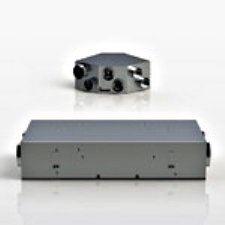ERV vs HRV: Which is the Best Ventilation System?
 As the days go from cool to cold and the last leaves fall from the trees, it’s time to admit it. Yes, winter is coming. It’s not even the snow and ice that most of us mind so much, it’s the stale, cooped-up atmosphere indoors. That’s why many homeowners are looking for a good ventilation system, to get nice fresh air without opening a window when it’s 10 or 20 below outside. You may have heard of whole-house ventilation systems -- HRV (heat recovery ventilator) and ERV (energy recovery ventilator) -- but what’s the difference? And what’s the right choice for your home?
As the days go from cool to cold and the last leaves fall from the trees, it’s time to admit it. Yes, winter is coming. It’s not even the snow and ice that most of us mind so much, it’s the stale, cooped-up atmosphere indoors. That’s why many homeowners are looking for a good ventilation system, to get nice fresh air without opening a window when it’s 10 or 20 below outside. You may have heard of whole-house ventilation systems -- HRV (heat recovery ventilator) and ERV (energy recovery ventilator) -- but what’s the difference? And what’s the right choice for your home?
What is a Whole-House Ventilation System and Who Needs One?
A whole-house ventilation system works to provide better quality air throughout the entire home. It may be used alone or in conjunction with your HVAC setup. There are two types: HRVs and ERVs. Both are mechanical devices -- also known as “air exchangers” -- that use insulated ducts to remove indoor air and replace it with fresh outdoor air, using a system of fans to circulate it around the building. As well, the systems transfer heat from the outgoing air (which has been warmed by your furnace) to the incoming supply, so you don’t get hit with icy blasts.
Interestingly, the homeowners who need a ventilation system the most are those who live in the most thermally efficient residences. If you’ve gone to the effort of sealing up your home against heat loss, or if you live in a high-performance, airtight new house, you'll have less fresh air coming in through the building envelope.
What are the Advantages and Disadvantages?
Advantages
Ventilation systems offer the following benefits. They:
- pull in fresh outdoor air and circulate it throughout the building.
- filter incoming air.
- remove stale air.
- reduce heat loss by transferring heat from outgoing to incoming air.
- can be reversed in summer, to reduce loss of air-conditioned cool air.
- provide a healthy supply of oxygen to residents in your home.
- improve indoor air quality by reducing the level of contaminants, such off-gassing from paint.
- control humidity inside the home to prevent moisture damage and mold growth. With some ventilation systems, you do not need a separate bathroom exhaust fan.
- bring homes into compliance with ASHRAE 62.1 and 62.2 Ventilation and Acceptable Indoor Air Quality in Low- Rise Residential Buildings.
Disadvantages
There are a few problems with HRVs and ERVs, namely:
- These ventilation systems are expensive to install. Potential savings on energy bills will only partially offset the installation cost.
- Standard HRV or ERV equipment won’t function well in extreme cold. If you live in an area with harsh winters, you’ll need specialized (more expensive!) equipment with freeze and frost protection. Look for 10-year HVI certification to minus 15 degrees F.
- The systems will need regular maintenance, including changing the filter every 6 months.
- Certain systems are noisy to run.
- There is some energy cost in running the ventilators’ fans, though in areas with large seasonal temperature variations, this is only a small amount compared to the heating (or cooling) energy recovered.
ERV vs HRV: Which System Wins?
As described above, Energy Recovery Ventilator and Heat Recovery Ventilator systems function very similarly. The difference is really in one important detail: ERVs transfer not only heat, but also about 50 percent of the existing humidity, whereas HRVs transfer just heat. In wintertime, an ERV will transfer humidity to the inflow of air, in summer, to the outflow.
So make your decision about which system will work best for you based on 2 simple factors:
- The local climate. If you live in Minneapolis, for example, with its famously cold winters, heavy furnace use will usually dry out your home. So an ERV would be best for you.
- Your individual home. If your home tends to be damp in the winter, extra humidity is the last thing you need in a ventilation system. In this case, go for an HRV installation.
For more information about the best ventilation system for you, contact an experienced HVAC professional.
Laura Firszt writes for networx.com.
Updated December 23, 2018.
Looking for a Pro? Call us (866) 441-6648

Average Costs
Related Experiences

Yard Cleanup By A Local Landscaper Who Cares About Customers

Installing Nest Thermostat Almost As Hard As Learning To Use It



